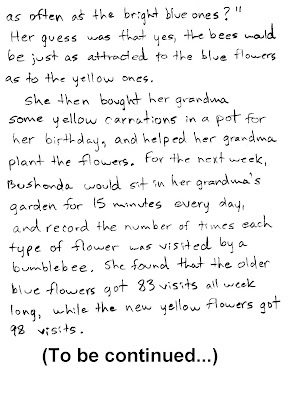Where students in Mr. Mikulski's science classes can come to find their weekly homework assignments, as well as reminders and notices about class!
Thursday, September 19, 2013
Wednesday, September 18, 2013
HW #3a
Use the included example, your notes and the link in the previous post to complete the problem set below.
Monday, September 16, 2013
Link to reading on significant digits and uncertainty...
Several of my students asked that I put the link to the reading we looked at today up on the website. Here you go:
http://www.angelfire.com/scifi/ricks/uncertainty.html
best,
Mr. M
http://www.angelfire.com/scifi/ricks/uncertainty.html
best,
Mr. M
Thursday, September 12, 2013
HW #2b
Be sure to complete both HW problem sets (today's and yesterday's, further below) and bring them in to grade on Monday... - Mr. M
Wednesday, September 11, 2013
HW #2a
Sorry, I had meant to post this yesterday... looks like you will only have two assignments this week! (This one, and the one I will post tomorrow)
-- Mr. M
-- Mr. M
Friday, September 6, 2013
HW #1c -- Find a graph, and copy it down!
The last assignment this week can be completed by following these steps:
1) Find a graph anywhere -- in a magazine, on a billboard, in a book, or on a website.
2) Make a copy of the graph as best as you can, with your pencil or pen, onto your notebook paper.
3) Label each part of T.A.I.L.S. that you see on your graph; for example, write "TITLE" with an arrow pointing to where the graph's title is; circle the hash marks showing the interval and write "INTERVAL" next to the circle, etc. You should be able to find and mark all five parts!
In case you don't have your notes handy, here were the five parts of a good graph:
T = Title -- says what two things are being compared in the graph
A = Axes -- The numbered lines on the bottom (x axis) and on the side (y axis)
I = Interval -- The even spacing between the hash marks along the axes
L = Labels -- Says which variable is being plotted along the x-axis, and which is being plotted along the y-axis
S = Spacing -- The data on the graph should fill up the graph (and not be crunched in a corner of the graph)
1) Find a graph anywhere -- in a magazine, on a billboard, in a book, or on a website.
2) Make a copy of the graph as best as you can, with your pencil or pen, onto your notebook paper.
3) Label each part of T.A.I.L.S. that you see on your graph; for example, write "TITLE" with an arrow pointing to where the graph's title is; circle the hash marks showing the interval and write "INTERVAL" next to the circle, etc. You should be able to find and mark all five parts!
In case you don't have your notes handy, here were the five parts of a good graph:
T = Title -- says what two things are being compared in the graph
A = Axes -- The numbered lines on the bottom (x axis) and on the side (y axis)
I = Interval -- The even spacing between the hash marks along the axes
L = Labels -- Says which variable is being plotted along the x-axis, and which is being plotted along the y-axis
S = Spacing -- The data on the graph should fill up the graph (and not be crunched in a corner of the graph)
Wednesday, September 4, 2013
HW #1b
Here is the rest of the 'story' that you started reading in Monday's HW. Annotate it, showing where the last three steps of the scientific method take place:
*Here's a COMPLETE version of the annotation 'key' (with all 7 steps of the scientific method):
Tuesday, September 3, 2013
HW #1a
Hello students, here is the first of three small HW assignments for this week. Remember to complete each one on looseleaf notebook paper, and to bring them in completed and ready to grade on Monday, Sept. 9th...
Subscribe to:
Comments (Atom)









